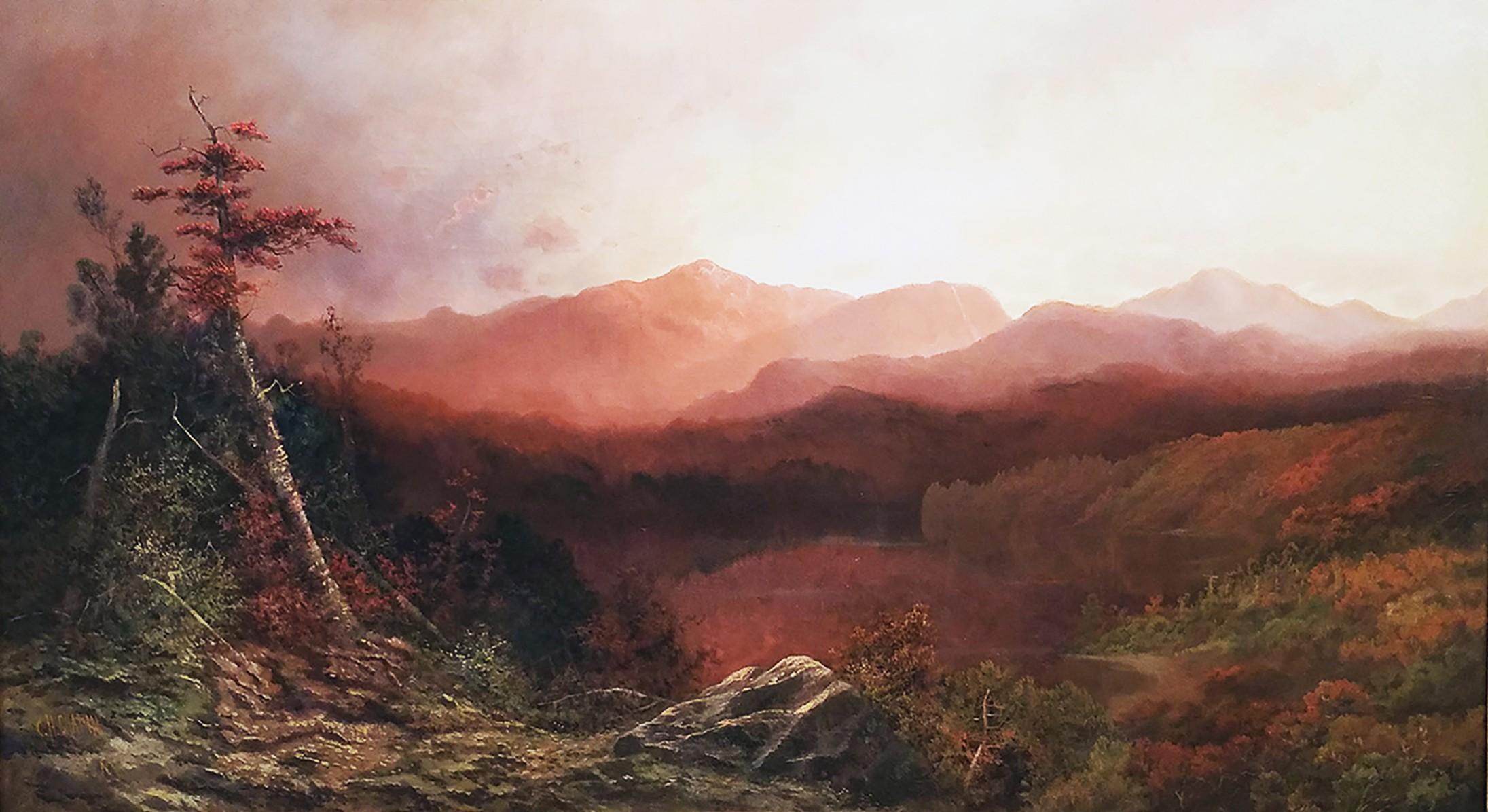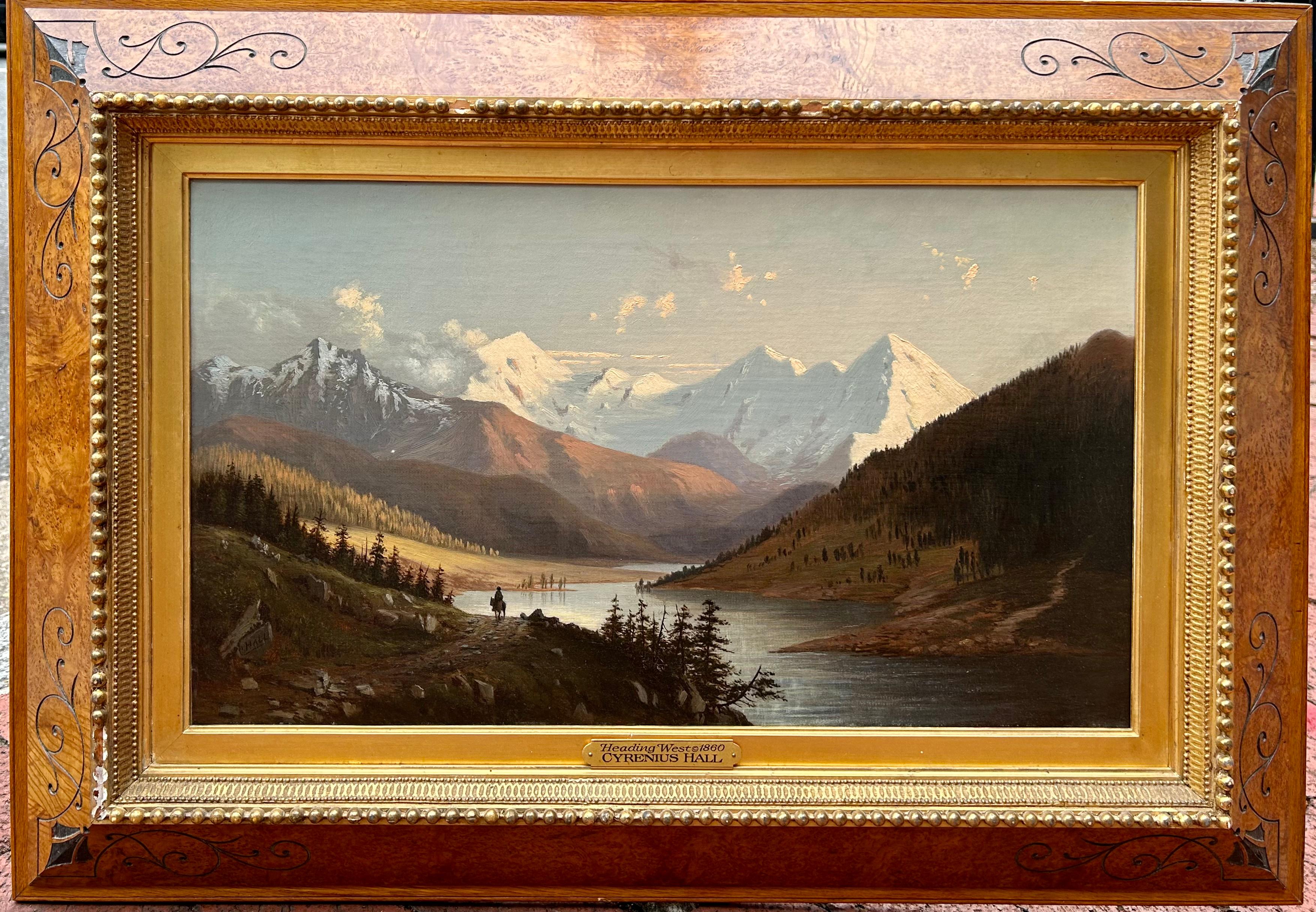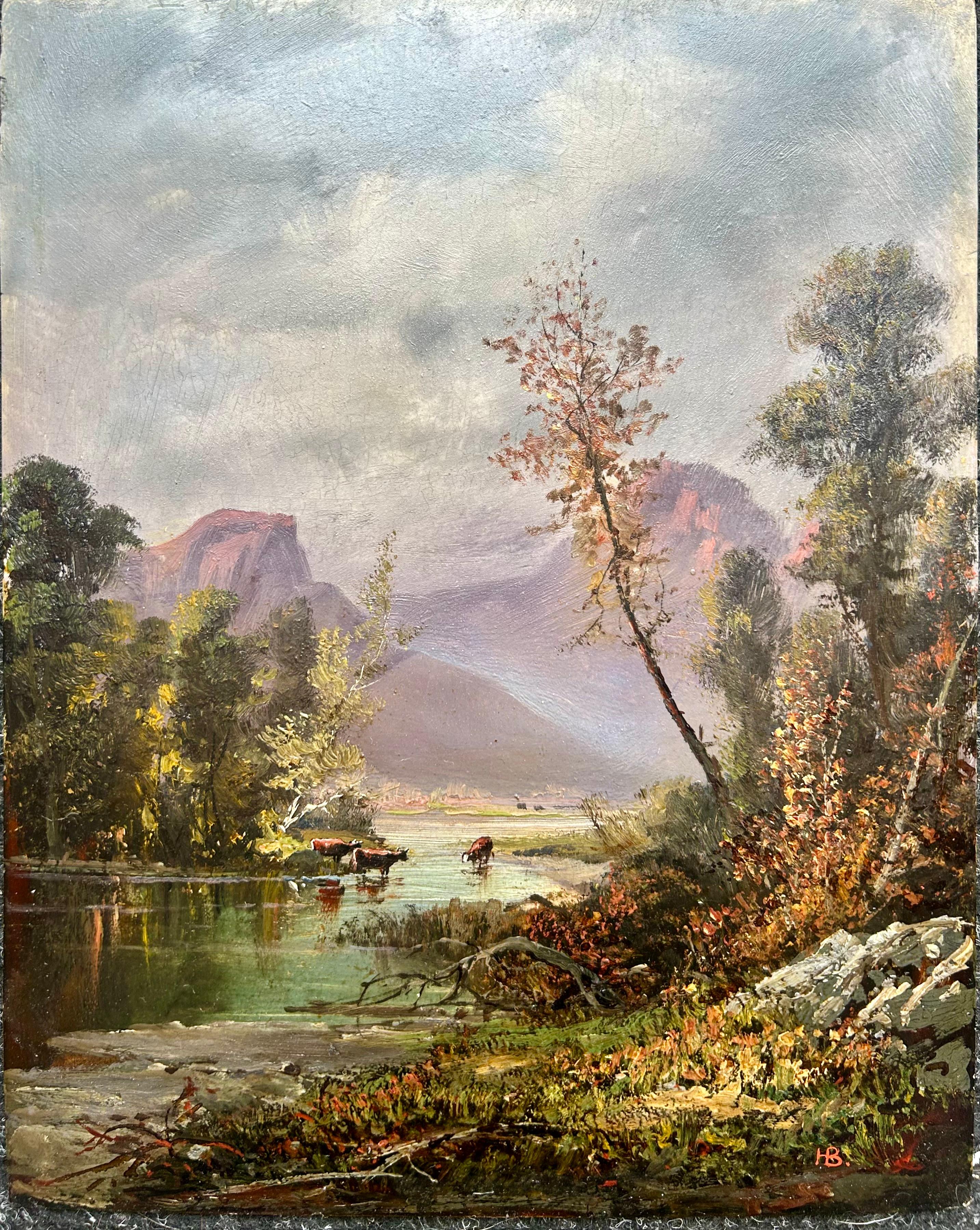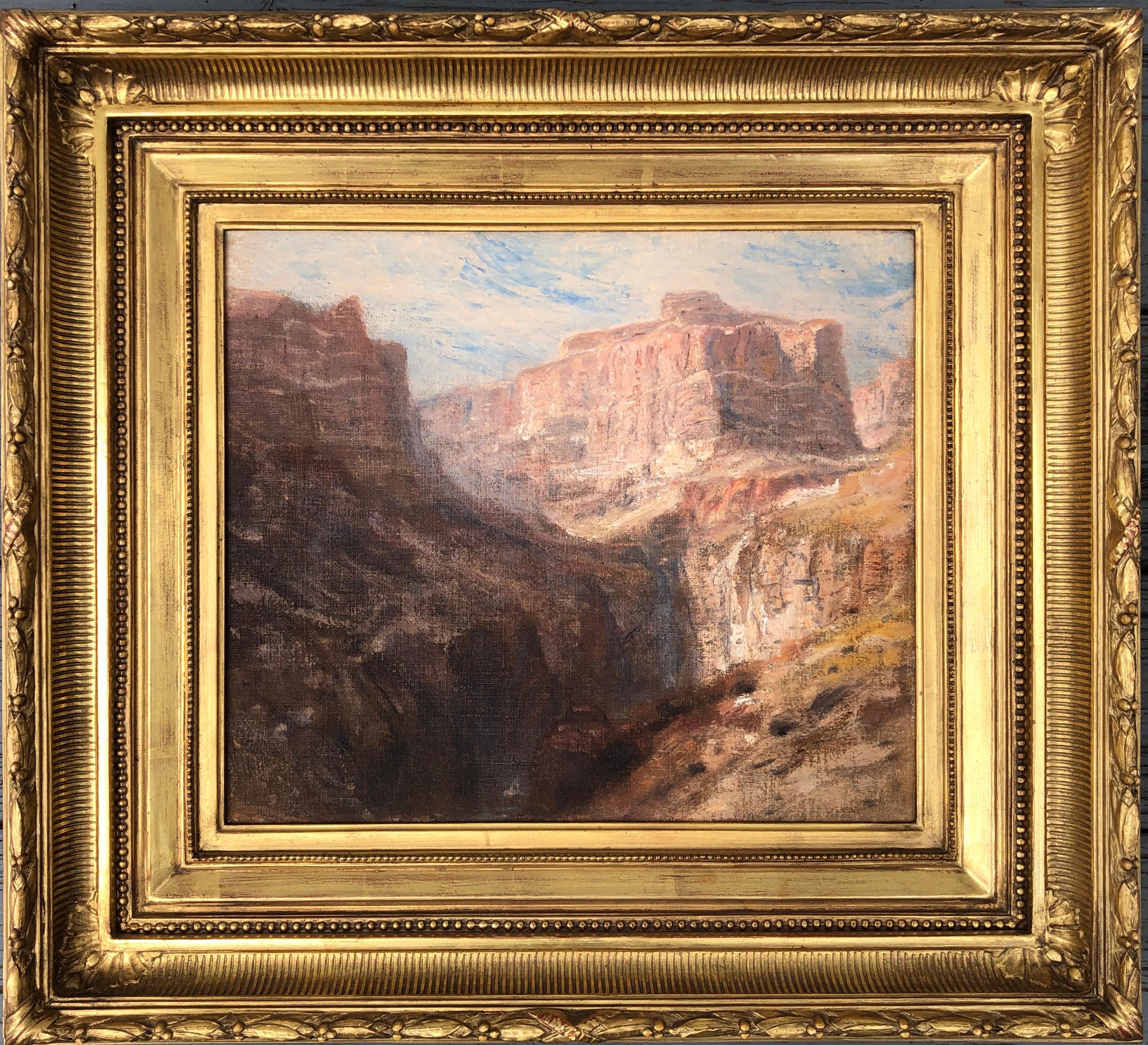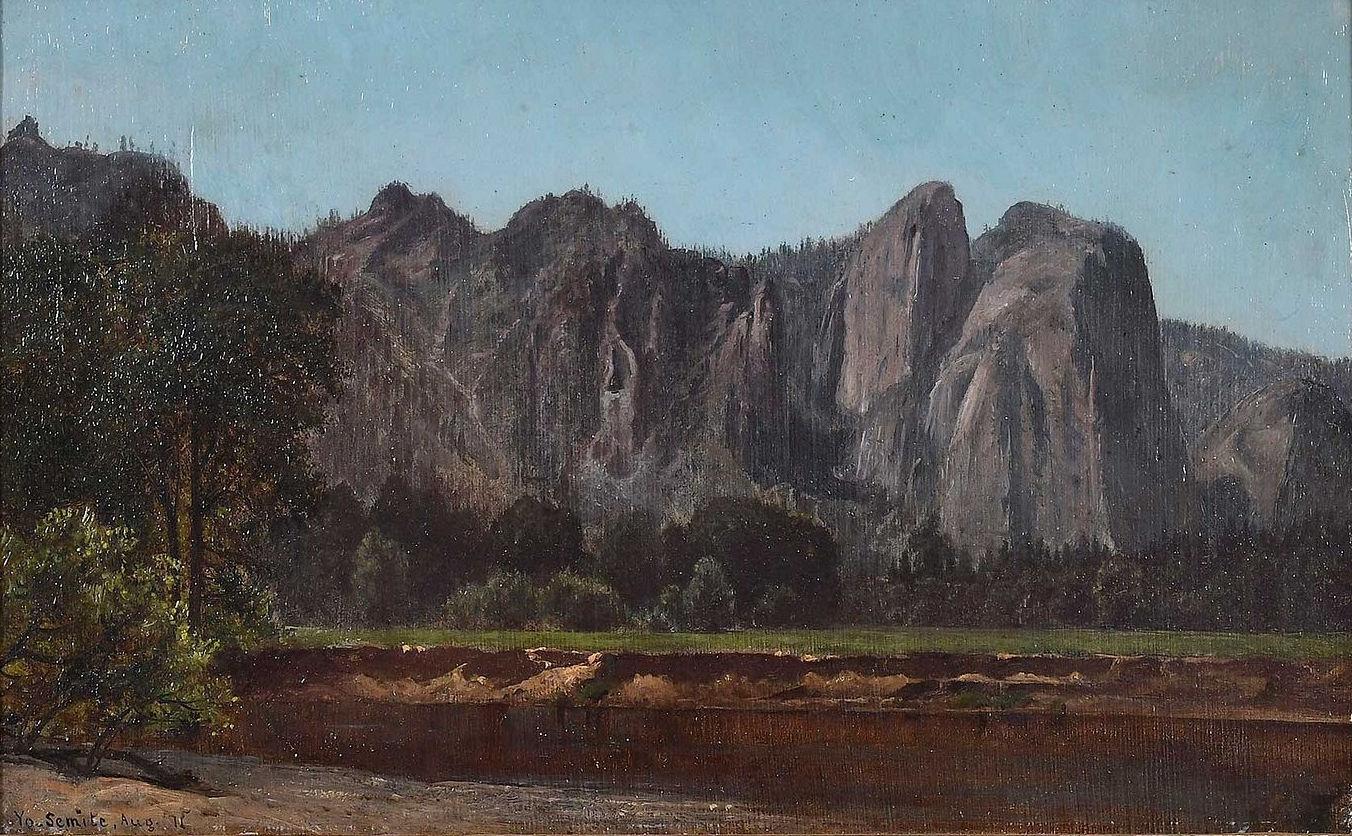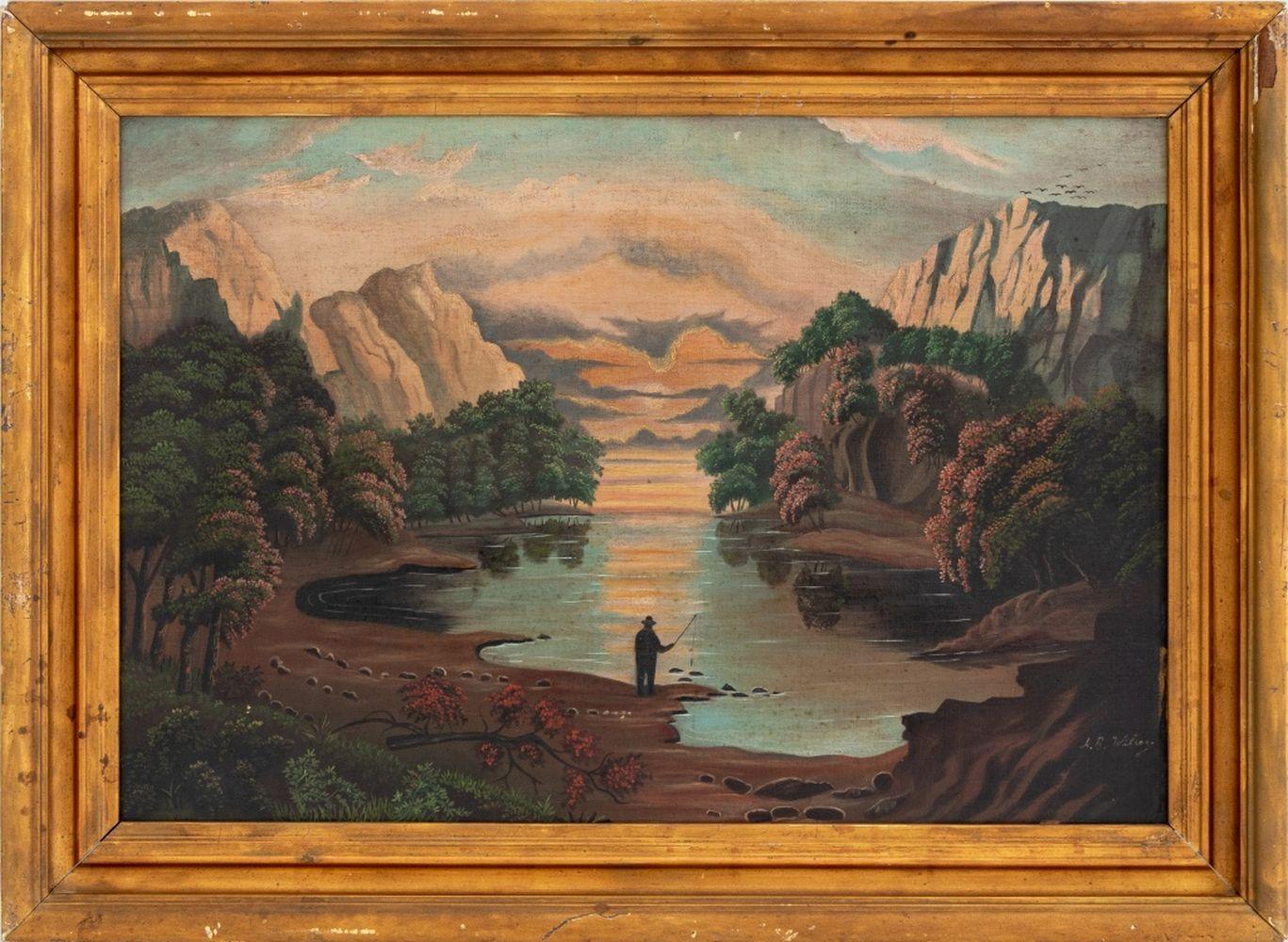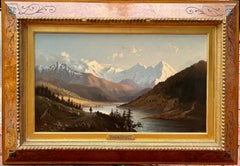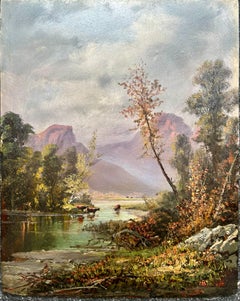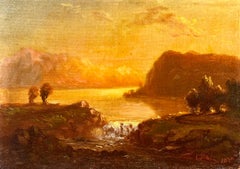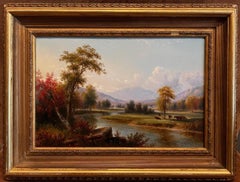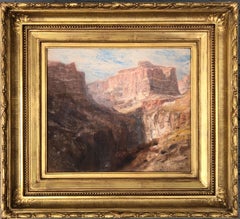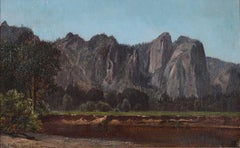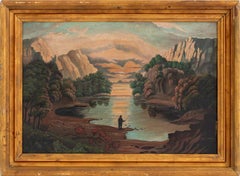Items Similar to Cathedral Spires, South Dakota
Want more images or videos?
Request additional images or videos from the seller
1 of 11
Cathedral Spires, South Dakotac. 1890s
c. 1890s
$5,200
£3,906.39
€4,504.70
CA$7,215.68
A$8,018.21
CHF 4,201.63
MX$98,329.06
NOK 53,589.31
SEK 50,414.85
DKK 33,621.15
Shipping
Retrieving quote...The 1stDibs Promise:
Authenticity Guarantee,
Money-Back Guarantee,
24-Hour Cancellation
About the Item
"Cathedral Spires, South Dakota," attributed to the accomplished painter Grafton Tyler Brown, is a stunning representation of the American landscape, in the style of the Hudson River School. This painting, believed to be created in the late 19th century, captures the grandeur and serenity of the iconic rock formations in the Black Hills of South Dakota.
Brown, a notable African American artist and lithographer, was known for his detailed and atmospheric landscapes. His work often depicted the vast and rugged beauty of the American West, showcasing a deep appreciation for the natural world. In "Cathedral Spires," Brown employs his signature style with detailed movement, natural colors, and a masterful use of light and shadow.
The painting features towering rock formations that resemble cathedral spires, set against a clear, expansive sky. The composition's use of perspective draws the viewer's eye upward, emphasizing the majestic height of the spires and the scale of the landscape. The rich, earthy tones and the play of sunlight across the rocks add depth and dimension, creating a sense of awe and tranquility.
In the foreground, trees and fallen limbs perfectly frame a trickling rocky river, further adding to the romantic beauty of the American West.
As a work attributed to Brown within the Hudson River School tradition, "Cathedral Spires, South Dakota" reflects the movement's ideals of romanticism and naturalism. It captures not just the physical beauty of the American wilderness but also a spiritual and emotional connection to the landscape. The painting stands as a testament to Brown's artistic talent and the rich cultural heritage of the American landscape tradition.
- Attributed to:Grafton Tyler Brown (1841 - 1918, American)
- Creation Year:c. 1890s
- Dimensions:Height: 18.75 in (47.63 cm)Width: 13.5 in (34.29 cm)
- Medium:
- Movement & Style:
- Period:
- Condition:
- Gallery Location:Fredericksburg, VA
- Reference Number:1stDibs: LU2574214869442
About the Seller
5.0
Gold Seller
Premium sellers maintaining a 4.3+ rating and 24-hour response times
Established in 2001
1stDibs seller since 2023
19 sales on 1stDibs
Typical response time: <1 hour
- ShippingRetrieving quote...Shipping from: Fredericksburg, VA
- Return Policy
Authenticity Guarantee
In the unlikely event there’s an issue with an item’s authenticity, contact us within 1 year for a full refund. DetailsMoney-Back Guarantee
If your item is not as described, is damaged in transit, or does not arrive, contact us within 7 days for a full refund. Details24-Hour Cancellation
You have a 24-hour grace period in which to reconsider your purchase, with no questions asked.Vetted Professional Sellers
Our world-class sellers must adhere to strict standards for service and quality, maintaining the integrity of our listings.Price-Match Guarantee
If you find that a seller listed the same item for a lower price elsewhere, we’ll match it.Trusted Global Delivery
Our best-in-class carrier network provides specialized shipping options worldwide, including custom delivery.More From This Seller
View AllOil Landscape of West on Snake River
By Cyrenius Hall
Located in Fredericksburg, VA
Cyrenius Hall was an artist who painted Western landscapes in a luminous style. He first went to Portland, Oregon in 1853 and 1854 over the Oregon Trail. From there he executed views...
Category
Early 19th Century Hudson River School Landscape Paintings
Materials
Canvas, Oil
Mountain Stream
By Henry Boese
Located in Fredericksburg, VA
In Mountain Stream, Henry Boese presents a majestic and serene vision of the American wilderness. A crisp, rushing stream flows through the heart of the composition, cascading over r...
Category
Mid-19th Century Hudson River School Landscape Paintings
Materials
Oil, Board
Oil Landscape of the Columbia River Gorge
By Cyrenius Hall
Located in Fredericksburg, VA
"Columbia River Gorge" by Cyrenius Hall is a quintessential example of the Hudson River School. Hall, known for his masterful landscapes, captures the awe-inspiring grandeur of the C...
Category
Mid-19th Century Hudson River School Landscape Paintings
Materials
Canvas, Oil
Oil River Landscape
Located in Fredericksburg, VA
This 19th-century American School river landscape painting by an unknown artist embodies the essence of the era’s reverence for nature and the burgeoning national identity. These wor...
Category
Mid-19th Century Hudson River School Landscape Paintings
Materials
Oil, Board
Oil Landscape of Waterfall
By William Guy Wall
Located in Fredericksburg, VA
Wall was born in Ireland and arrived in New York in 1812. He was already a well trained artist and soon became well known for his watercolor views of the Hudson River Valley and surr...
Category
Early 19th Century Hudson River School Landscape Paintings
Materials
Oil, Panel
Oil Water Landscape with Mountains
By Alfred Thompson Bricher
Located in Fredericksburg, VA
Alfred Thompson Bricher, an American artist celebrated for his exquisite marine and landscape paintings, created "Boats Sailing Between Mountains." This piece exemplifies Bricher’s m...
Category
Late 19th Century Hudson River School Landscape Paintings
Materials
Paper, Oil
You May Also Like
High Peaks in the Adriondacks
By Charles H. Chapin
Located in Saratoga Springs, NY
Charles Henry Chapin - American (1830 - 1889)
“High Peaks of the Adirondacks”
Note: Peaks include Mount Marcy, Haystack Mountain, Basin Mountain, as viewed from the Ausable Lake Area...
Category
Late 19th Century Hudson River School Landscape Paintings
Materials
Canvas, Oil
Tower of Babel, Colorado Canyon oil painting by Samuel Colman
By Samuel Colman
Located in Hudson, NY
Tower of Babel, Colorado Canyon
12 ⅞" x 14 ½"
20 ¾" x 22 ¾" x 4 ¼" framed
Verso sketch of fall trees on a hillside.
Provenance: The estate of Samuel Colman.
Purchased by private c...
Category
Early 20th Century Hudson River School Landscape Paintings
Materials
Canvas, Oil
"Cathedral Rocks, Yosemite Valley" George Henry Smillie, West, 19th Century
By George Henry Smillie
Located in New York, NY
George Henry Smillie
Cathedral Rocks, Yosemite Valley, 1871
Signed and inscribed board verso "Cathedral Rocks-Morning-Yo-semite Valley Aug. 71 Geo. H. Smillie", also inscribed "Yo-se...
Category
1870s Academic Landscape Paintings
Materials
Canvas, Oil, Board
Signed Hudson River School Mountain Landscape
Located in Astoria, NY
Hudson River School, Mountain Landscape, Oil on Canvas, late 19th century, signed "A.E. Willey" lower right, giltwood frame. Image: 12.25" H x 18.25" W; frame: 16" H x 22" W. Proven...
Category
Late 19th Century Hudson River School Landscape Paintings
Materials
Canvas, Oil
"Untitled" 19th Century Painting by Edmund Darch Lewis - 1875 Hudson School Art
By Edmund Darch Lewis
Located in Carmel, CA
Edmund Darch Lewis (American, 1835-1910)
'Untitled', 1875
Oil paint, linen, stretcher bars
The artist signed the bottom right of the painting.
Dimensions: 43.5" x 25.5" x .75"
Frame...
Category
19th Century Hudson River School Landscape Paintings
Materials
Linen, Oil, Stretcher Bars
Large Panoramic YOSEMITE VALLEY Western California Encampment Landscape Figures
Located in New York, NY
Joseph John Englehart (1867-1915) was a prolific American landscape painter who painted in realist style. He was born on June 14, 1867 in Chicago, Illi...
Category
19th Century Hudson River School Landscape Paintings
Materials
Oil
More Ways To Browse
Antique Cathedral
African American Antique
African American 19th Century
19th Century Landscape Hudson River School Paintings
Rock Hudson
Paintings Of Thames River
Western Oil Paintings Cowboys
Empty Box
Original Dune
Antique Native American Painting
Battle Scene Oil Painting
Gustav Oil Paintings
Abstract Sailboat
Oil Painting Children In Garden
Pacific Seascapes
Wyoming Landscape Paintings
Ann Summers
Oregon Coast
